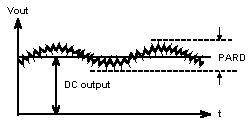I'm truly very clueless about electrical circuits and I'm hoping to get some help. I'm told I have some AC ripple in my DC power lines, so here I am looking for some help. Here is a brief summary of what I have.
I'm using the following part to get a 24V DC output.
https://www.digikey.com/product-detail/en/DRP024V060W1AZ/603-1225-ND/2236868
I'm then taking the 24V DC from this and it is supplied to the input of this voltage regulator.
https://www.mouser.com/ProductDetai...oN%2by1lsBNgdTVGAdL6LsoABrU%2btLt11wkG2xs9A==
The voltage regulator needs capacitors on the input and output lines. I currently do not have those in my circuit and would like to add them. I have no knowledge about selecting the appropriate capacitors and didn't know if someone could offer some help.
I'll be powering up to 10 low current draw sensors with the expected current values 3.4mA on average (100mA peak) with the output from the regulator.
I'm using the following part to get a 24V DC output.
https://www.digikey.com/product-detail/en/DRP024V060W1AZ/603-1225-ND/2236868
I'm then taking the 24V DC from this and it is supplied to the input of this voltage regulator.
https://www.mouser.com/ProductDetai...oN%2by1lsBNgdTVGAdL6LsoABrU%2btLt11wkG2xs9A==
The voltage regulator needs capacitors on the input and output lines. I currently do not have those in my circuit and would like to add them. I have no knowledge about selecting the appropriate capacitors and didn't know if someone could offer some help.
I'll be powering up to 10 low current draw sensors with the expected current values 3.4mA on average (100mA peak) with the output from the regulator.

 src.
src.


